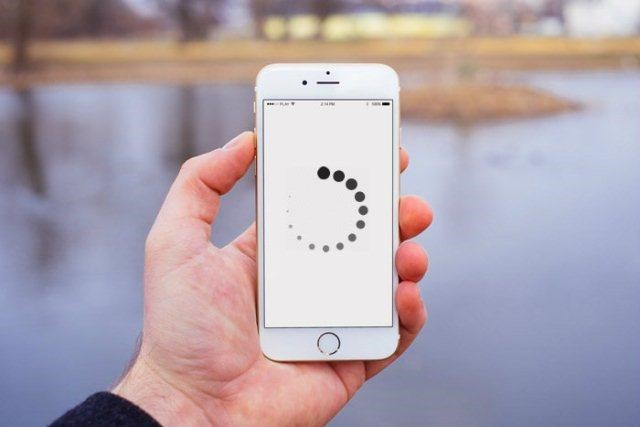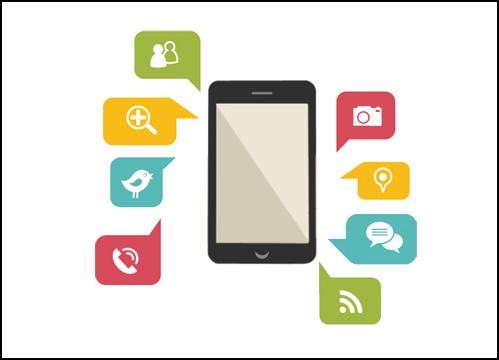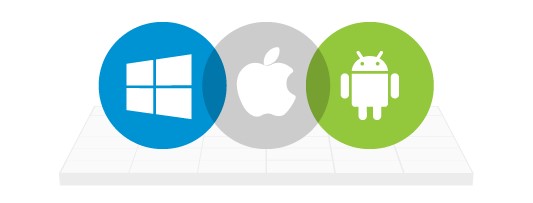The transportation industry today is undergoing massive technological changes and if you run a transportation business, it would be wise to adopt mobile tech to simplify your work process and improve your business performance.
Mobile apps can transform your business in multiple ways like geottracing vehicles and staff, smart information gathering, payroll/operation management and more.
If you want to create a functional yet affordable mobile app, you need a good team and collaboration of talents, skills and creativity.
In my last article, I wrote about the importance of mobile apps for transportation/freight industry.
Some simple tips to create a good mobile app for your transportation business can be:
-
As simple as possible
It’s not that simple to develop a ‘simple’ user interface but if you want a mobile app that will get new users and retain the old ones, you must pay attention to the simplicity of the system. It’s easy to develop various features in an app but making them compact and easy to navigate through is a little bit harder.
It’s already known that 77% of users permanently abandon the app within the 3 days after the install. As stated in the article, ‘the key to success is to get the users ‘hooked’ during the first 3-7 days’.
The only way for you to engage your users is with simple ‘simplicity’.
How?
-keep the app clear with only relevant features,
-use some automation within the app to lessen the users’ effort,
-avoid repetitive input requests and keep only meaningful features,
-always listen to the users’ feedback and
-avoid repetitive notifications about the app changes = send only the relevant ones so as not to upset the users too much.
Although you may think that the application will appear as poor, the very same simple UI will help your users navigate your application smoothly – no hassle, just install and start using.
Once your app delivers the value it described, your retention rate will likely rise as everybody values an app which ‘walk’ them through intuitively.
Don’t forget, simplicity is the foundation of user engagement and treat it as such.
-
Make Responsive design
Responsive design is also one of the most important things for a transportation mobile application.
As there are many mobile devices with different dimensions, you need to create a responsive design for your app if you want to reach a lot of customers on the market.
Layout can change based on the screen size and orientation like below.

You should start with a clean design that makes the most out of the mobile and then while scaling up for screen sizes you can scale up the UI complexity – this way, you’ll ensure proper user experience as per the advice. Responsive design enables you to target wide coverage of channels without jeopardizing user experience.
There are several frameworks that support this feature, like Bootstrap or Foundation – they can be quickly integrated into your app and they both work well on a mobile application.
Responsive design allows all users to get access to your app within their mobile devices quickly and without any hassle.
-
Make it Quick
It’s a widely known fact that almost half of the users will abandon the mobile app unless it loads within the first 5 seconds or less. It’s even concluded that 10 seconds period is a limit for keeping the users’ attention.
If you want your users to choose your app for business, you should make an application that will load instantly so that the users can operate it quickly. Especially in the transportation business, where you have to be quick due to the dynamic nature of work.

Besides the old gold ‘test it early and test it often’, if you need to test your mobile app load time, there are different programs you can use. You should examine a few things for a faster app load like: images, fields, ads, analytics, compression of unnecessary data, server connection, etc.
The mobile app should offer the basics – the items to load first must be the ones needed to perform the wanted action while supporting content can load later.
Since we live in a fast world and most of us are busy with our daily activities, our expectations for a mobile app are high so try to keep pace with users’ expectations.
-
Only Important Features
In general, transportation mobile app development can have three modules:
Customer Panel
Driver Panel and
Admin Panel
Each of the panels has its features – for example:
- Customer panel = user registration/authentication, profile creation, select vehicle, schedule booking, driver contact, track shipment, get fare estimate, cancel reservation, etc.
- Driver Panel = driver registration/authentication, shipper/freight details, manage requests, GPS, payment etc.
- Admin Panel = registration/login, dashboard, shipper/driver/dispatcher management, fleet management, invoice and payment etc.

If you’d like to give your users a better user experience, add some additional features like maps, booking systems, price display and others. You can go beyond and include extra features like in-app chat, driver safety, multilingual driver support, real-time analytics, etc. if you wish to offer even more.
Make sure to combine these features well so to provide the best service for all customers.
It’s always challenging to choose the best technology stack for integrating different features e.g. Stripe, Braintree for payment gateways; Firebase (Android) or APNS (iOS) for notification triggering; Firebase for real-time analytics; Postgresql or MongoDB for database requirements or AWS, Google or Azure for cloud platforms, etc.
A good development company will give you valuable suggestions for the best development path as per your specific requirements.
-
Make it for Multiple Platforms
There are three main platforms today that are the most popular – Android, iOS and Windows.
If you’re able to create an app for each of these platforms, your mobile app reach will be significantly broader. Using all three platforms can enable your mobile app to reach a lot of customers at the same time, but it is not a primary reason for a successful app.
Besides the platforms, your mobile app must fulfill other requirements as well so don’t rely only on creating an app for all platforms.

If developing an app for each of the platforms seems a bit costly to you, you can try developing a cross-platform app. There are advantages to native mobile apps, but you can always check the cross-platform mobile app development tools like Xamarin, PhoneGap etc.
If you don’t have the necessary skills for developing an application for your business, contact a good and reliable development company to help you out with it.
Not only they will develop a mobile application for you, but they will also give you some valuable tips and suggestions on various basic and advanced features for your app.
-
Keep an eye on Feedback
This part is essential for your mobile app growth – your users are your best critics so listen carefully to what they have to say.
Feedback section allows the users to leave their comments about your app and give suggestions for improvement – if taken seriously, it can be your product roadmap to introduce the changes that matter the most to the users and eliminate time considering what’s most important to them. Only your customers can tell you what could be improved, added or what doesn’t work. Companies that don’t listen to their customers often guess what the users need, which is fundamentally wrong.
It’s not difficult to add a feedback section to your mobile app as there are plenty of tools you can use to include it to your mobile app. You can also choose from various mobile app feedback form templates like customer satisfaction (CSAT), customer effort score (CES), goal completion rate (GCR) and many others.

Don’t be afraid of user feedback as that’s the turning point for your app – surely some negative reviews may hurt a bit but they’re the essence of upgrading your mobile app for better.
Listen to your users and improve your app to offer the best service possible.
-
Include Social Media
Social media plays an important role in users’ life and the world today. Whenever it’s possible, try to integrate your application with social media channels as many people use them daily.
If you want to reach these people, you need to take into consideration integrating your mobile app to some social media sites like Twitter, Facebook, Instagram, etc. depending on your target audience.

Even a simple login via social media can make a difference and allow your users to register quickly and easily thus improving your user acquisition.
Although it seems a bit frivolous to integrate social media into your transportation mobile app, keep in mind that social media usage is one of the most popular online activities, so why wouldn’t you make the registration for your users as easy as possible?
As per Statista, an estimated 2.65 billion people were using social media worldwide in 2018 while this number is projected to increase to around 3 billion in 2021.
Such numbers go in favor of social media – if you can recognize the potential, you can reap the full benefit.
Final Word
Apart from these tips, the best solution is to choose a reliable partner who understands your needs and technologies that need to stand behind.
If you take a look at the recent advancement within the transportation industry, it’s more and more evident that mobile app development can make your business more customer-friendly and result-oriented.
If you’d like your business to stand out in your market, a mobile app is an investment worth making.


Great article! And if you’re thinking of developing a mobile app it’s worth considering React Native for fast and cheap mobile development. We analysed pros and cons of cross platform development on Polidea blog: https://www.polidea.com/blog/react-native-vs-native-app-developmentpros-and-cons-for-business/
Such wonderful article and love to read more on the same niche. Keep it up with good work.
Thank you very much John Davies, I’ll try to keep up with a good work 😉 Wish you all the best in the new 2020! Cheers, Maja
Amazing Work ! I Really liked the layout of your blog. You’ve described all the tips in a very easy-to-understand manner. It helped me a lot in developing a mobile app. The information given here is incredible. Keep sharing stuff like this.
These are some great tips about building a transportation mobile app. I think, there is going to be rise in the delivery apps (UberEats) as well because of the lockdown and current pandemic. Implementing these mobile app tips can really be fruitful.
Nce article. Transportation apps are very important in supply chain.